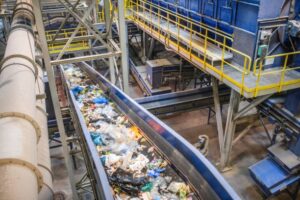People living in rubbish dumps Adelaide communities survive by sorting through rubbish and recycling items they can keep or sell. But this way of life is extremely hard on the bodies and minds of families, trapping generations in poverty.
A landfill is a huge pit where trash is dumped. It has a liner to prevent leakage and is covered with dirt for safety. Bacteria break down the trash to produce methane and carbon dioxide.
What is a rubbish dump?
 A rubbish dump is an area where trash, refuse, or garbage is stored. It is usually located away from residential areas and areas used for food production or drinking water so that it does not contaminate the environment or pose a health risk. The waste in a rubbish dump is often burned, but it can also be buried. In some cases, the rubbish is sorted through by people who live in the area and recycle as much of it as possible.
A rubbish dump is an area where trash, refuse, or garbage is stored. It is usually located away from residential areas and areas used for food production or drinking water so that it does not contaminate the environment or pose a health risk. The waste in a rubbish dump is often burned, but it can also be buried. In some cases, the rubbish is sorted through by people who live in the area and recycle as much of it as possible.
In the past, people often threw their rubbish into open pits without anyone to check on it or protect the ground and surface water quality. It led to problems with rats, mice and other pests, as well as chemical contamination.
Now, most people take the time to sort through their rubbish and dispose of it responsibly. However, in some places, this is not possible. In those areas, people living and working in rubbish dump communities survive by making a living from recycling the flotsam and jetsam of modern life.
The communities that live in rubbish dumps have to be incredibly resilient to survive. They make a living by combing through the garbage and separating items they can sell or keep for themselves. Sadly, this does not pay very well: in fact, most of them live on less than $2 per day, which is below the United Nations’ line for extreme poverty.
What goes into a rubbish dump?
It is important to understand what rubbish goes into rubbish dumps Adelaide and how it gets there. It is because people can be responsible for ensuring their waste ends up in the correct receptacles by knowing what they can and cannot throw away. It means that they are less likely to cause environmental harm as they will not be disposing of hazardous wastes in the wrong places.
Many different types of rubbish go into landfills. Some of the most common include household rubbish, such as plastic or tin packaging and paper rubbish, and construction and demolition (C&D) rubbish, such as concrete and wood rubble. Other rubbish that can be disposed of in landfills includes organic waste, such as rotten meat and garden waste, and non-organic waste, such as metals and glass.
Landfills are huge pits wherein waste is buried underground and covered with soil or any other synthetic layer. The waste that goes into landfills is sorted out in order of priority, and it is arranged by type and category.
What happens to rubbish in a rubbish dump?
A rubbish dump is where a city, town or village keeps its waste. It is usually open to the public, and the rubbish is shuffled around to aid decomposition.
Household rubbish is the most common type of rubbish and contains things such as paper, cardboard, plastic and wood. It can also include metal items like tin cans or bottles and glass.
Non-biodegradable waste doesn’t break down in the natural environment and can contaminate soil and water resources, which harms ecosystems and kills wildlife. It is also a source of methane, a potent greenhouse gas that’s 28 to 36 times more effective than carbon dioxide at trapping heat in the atmosphere. Examples of non-biodegradable waste are drink cans and plastic bags, batteries, food packaging and expired medicines.
The trash that doesn’t go into landfills or power plants is processed at a waste transfer station. Workers at these facilities sort the garbage that’s dropped off by the waste trucks that run city routes. They remove items that aren’t accepted at local landfills and then compact, sort and load the garbage onto larger vehicles to be taken away for processing.
What happens to rubbish in a landfill?
Modern rubbish dumps Adelaide are scientifically engineered facilities built into the ground and regulated by local, state and federal governments. They’re designed to accept all forms of rubbish: wood wastes, clean asphalt, sand and clay, construction materials, food wastes and, most importantly, municipal solid waste (MSW).
Garbage dump locations go through a rigorous selection process. They must be high enough to prevent groundwater contamination, be far away from natural waterways (streams, rivers, lakes, oceans) and not be prone to earthquakes and landslides. They also must be accessible by public transportation.